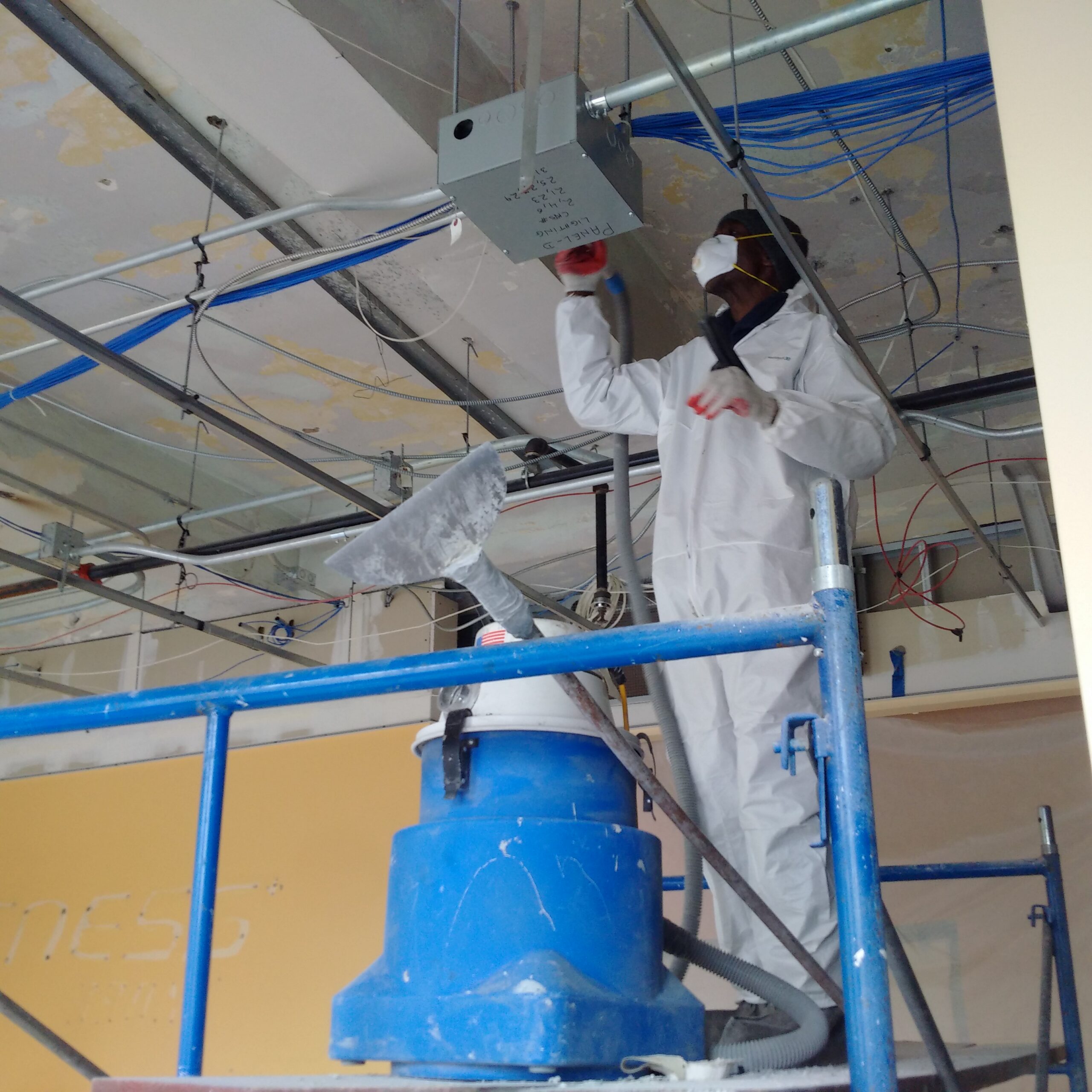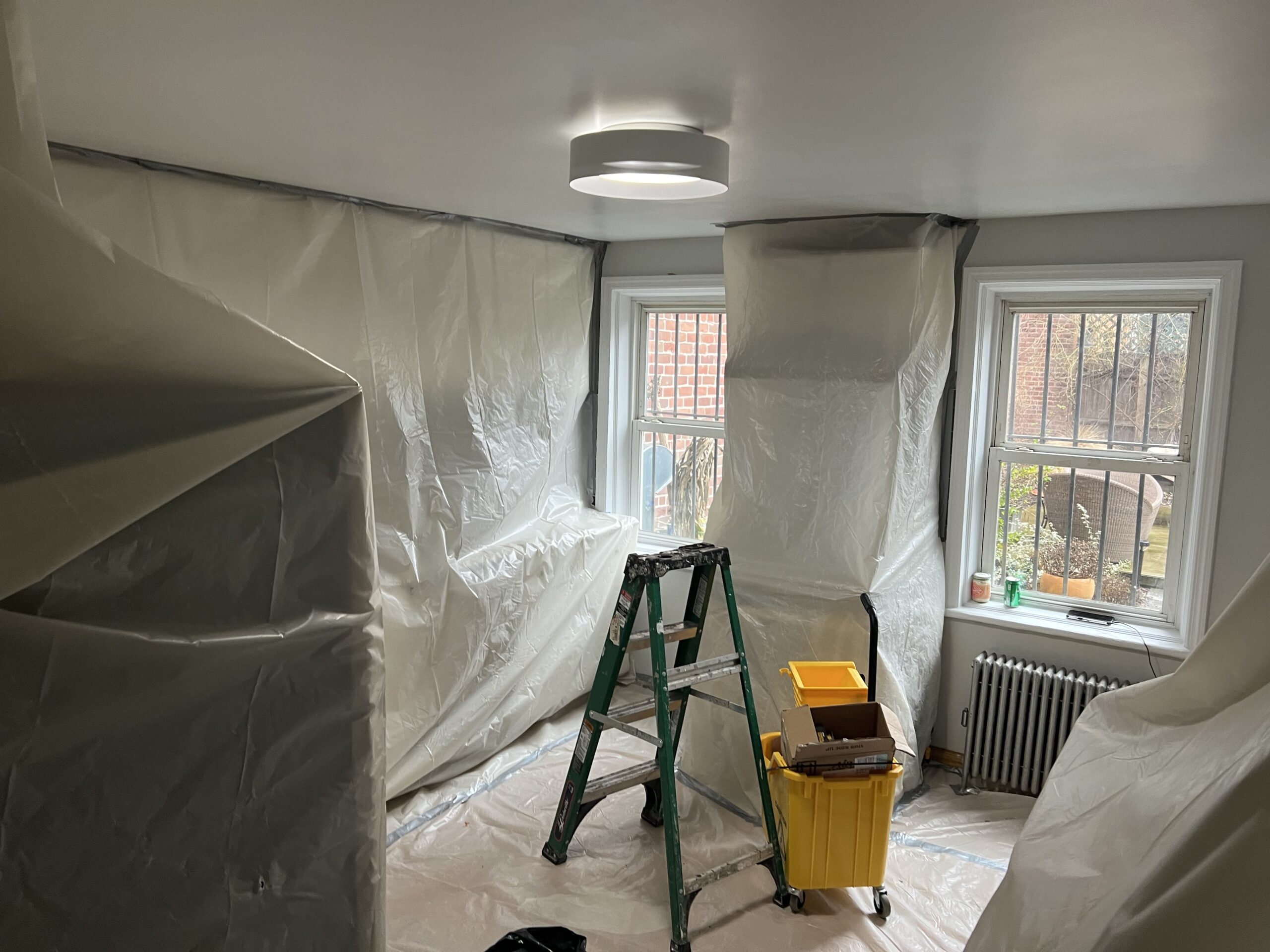Trusted Lead Paint Removal Company-- NYC's Premier Lead Abatement Service
Trusted Lead Paint Removal Company-- NYC's Premier Lead Abatement Service
Blog Article
Best Practices for Making Certain Safe and Extensive Lead Offense Abatement
Addressing lead infraction reduction requires a multi-faceted method to ensure both security and conformity. Initial evaluations making use of advanced detection techniques such as XRF analyzers established the stage for an accurate understanding of contamination degrees. Including proper containment strategies, consisting of airtight barriers and HEPA filtering, paired with using personal protective devices (PPE) for employees, creates the foundation of a secure operation. Careful cleaning methods, featuring HEPA vacuuming and wet-wiping, are important. Yet, it's the last clearance procedure, entailing thorough evaluations and lab screening, that genuinely validates a lead-free setting, making certain long-term safety. How do these practices adjoin to assure thorough lead reduction?

First Evaluation
Conducting a first evaluation is a crucial first action in lead violation reduction. This phase incorporates a comprehensive evaluation of the property to determine the presence, degree, and specific areas of lead-based hazards. Certified professionals, such as licensed lead inspectors or run the risk of assessors, should do a comprehensive website inspection, using devices like X-ray fluorescence (XRF) analyzers to precisely identify and measure lead focus in paint, dirt, soil, and water.
The evaluation has to likewise consist of a review of the building's background, previous records, and any problems or wellness issues reported by passengers - Lead Removal Contractors. Recording the findings carefully is crucial, as these records develop the basis for creating a reliable abatement technique. A detailed assessment likewise includes tasting and research laboratory analysis, which are crucial to verify the visibility of lead and overview succeeding actions
Moreover, it is imperative to connect the results transparently to all stakeholders, including property owners, renters, and regulative authorities. By making sure that the first analysis is performed with accuracy and roughness, specialists can lay a strong structure for a targeted and reliable lead reduction procedure, inevitably securing public wellness and making certain conformity with governing requirements.
Appropriate Containment
Proper control is vital to stop the spread of lead impurities during abatement tasks. Efficiently taking care of control minimizes the threat of lead dust and particles migrating to non-work locations, thus safeguarding both the atmosphere and individuals outside the prompt work zone.

Routine inspections of the control area are needed to look for violations or weaknesses in the barrier. Any kind of determined concerns ought to be without delay addressed to keep the integrity of the control. By sticking to these practices, reduction tasks can efficiently regulate lead contamination and reduce connected health dangers.
Employee Protection
Guaranteeing employee protection is critical throughout lead reduction projects to stop job-related exposure to dangerous lead fragments. Essential steps consist of making use of personal protective devices (PPE) such as respirators, handwear covers, and full-body matches specifically developed to block lead dirt and fumes. Employees need to undergo extensive training on the right use and upkeep of PPE, consisting of healthy screening for respirators to ensure maximum effectiveness.
Engineering controls, such as regional exhaust air flow systems, are vital in decreasing airborne lead concentrations in the work environment. Administrative controls should also be executed, including limiting the duration of exposure and rotating workers to reduce individual exposure times. Routine medical security and biological tracking are important for very early discovery of lead absorption, making it possible for prompt treatment and this contact form therapy.
Moreover, establishing a decontamination protocol is vital. Workers must follow strict decontamination treatments prior to breaks and at the end of their change to stop lead dust from being carried outside the workspace. This includes extensive hand and face washing with lead-specific cleaning representatives and altering out of contaminated clothing.
Thorough Cleaning
Preserving a safe workplace extends past employee protection and encompasses thorough clean-up to ensure lead fragments are completely removed from the website. The procedure of meticulous cleaning is important in avoiding the recontamination of the abated location and protecting both existing and future passengers.
To achieve a thorough clean-up, all job areas have to be systematically he has a good point sanitized. This involves making use of specialized HEPA (High-Efficiency Particulate Air) vacuum cleansers and wet-wiping techniques to catch and remove great lead dirt that may have picked surfaces. It is imperative to clean all horizontal surfaces, consisting of floors, window sills, and kitchen counters, as well as upright surface areas that may have caught lead fragments.
Workers need to put on suitable individual safety equipment (PPE) throughout cleaning to avoid exposure to recurring lead dirt. Used cleaning products such as wipes, sponges, and wipe heads should be thrown away in conformity with contaminated materials disposal guidelines.

Last Clearance
Final clearance is the i thought about this important ending stage of lead abatement that figures out whether the website is secure for reoccupation. This crucial step includes thorough inspection and testing to confirm that all lead dangers have actually been properly eliminated. The process begins with a visual assessment by a qualified lead-based paint assessor or threat assessor to ensure no visible dust or debris remains. This is followed by gathering dust wipe samples from different surfaces, including floors, windowsills, and other horizontal surfaces. Lead Removal Contractors.

Final clearance screening not only safeguards future residents however also ensures compliance with regional, state, and federal policies. It offers as a documented recognition of the abatement contractor's adherence to sector best techniques. Guaranteeing a comprehensive and effective final clearance is essential in securing public health and cultivating count on in the reduction process.
Final Thought
Ensuring secure and comprehensive lead offense abatement requires a multifaceted technique incorporating preliminary analyses with advanced detection approaches, effective control approaches, strict employee defense procedures, and careful cleanup procedures. The last clearance stage, featuring comprehensive examinations and laboratory testing, is vital to confirm compliance with EPA requirements. Adherence to these ideal techniques guarantees a risk-free atmosphere for owners, mitigates health and wellness dangers, and maintains governing requirements, thus promoting public health and wellness and safety and security in lead-affected locations.
Report this page